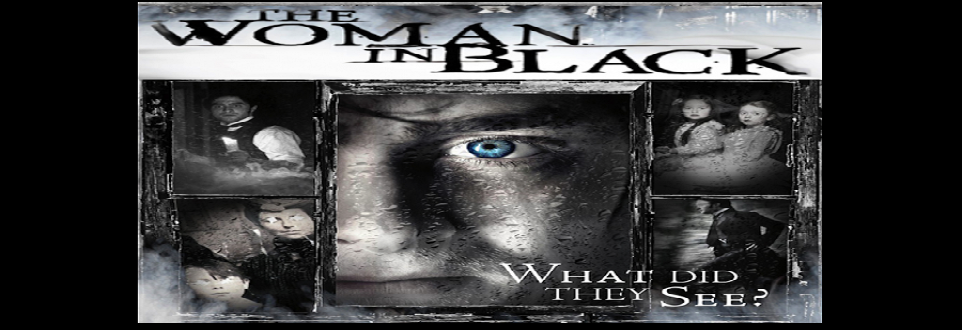The Woman In Black has received a lot of attention since its announcement, partly due to it being a well-known story from its book and stage production, and partly because all eyes are on Daniel Radcliffe.
The film is a big departure from Daniel, who will forever be known as Harry Potter, no matter how illustrious his career goes on to be. Focusing on the actor for a moment, there can be little criticism of his performance. From his appearance to his character portrayal, he performed wonderfully. The drawback to casting Radcliffe however was not in his performance, but that the public has known him for such a long time as a young person, thanks to Harry Potter, that it’s hard to shake that from your mind when watching The Woman In Black. Which means that it’s difficult to disengage the actor from his previous roles to view him objectively in this film. Put another way, we feel like we know Radcliffe, and that offers a sense of comfort when watching him perform in a horror film – and it removes quite a large element of the suspense from the film because we’re just too comfortable with the lead actor as someone not to feel scared by. And because the film is almost voyeuristic in that you feel as though you are accompanying Radcliffe on his journey, there is a peculiar sense of protection throughout.
All that could be overlooked and indeed overcome if the writing was stellar, but sadly it wasn’t. With a 12A certificate The Woman In Black was never going to be a terrifying, white-knuckle ride that kept viewers on the edge of their seat. It gets off to a slow start, where we learn of Radcliffe’s sad personal problems before he embarks on a journey from London to England’s North East as part of his job as a lawyer. His task is to get the paperwork of a deceased widow in order so her house can be sold off. Once we see the house, the film starts to rely too heavily on tired horror cliches to shock an audience that is desensitised to such attempts. Scares and moments of suspense were thin on the ground, but they were almost entirely revoked thanks to obvious camera movements (who doesn’t expect something to happen when the actor is to one side of the screen while what’s behind him is in full view, or when there’s a close-up and the camera then pulls back?) or creepy music acting as a big neon sign warning of an impending moment for which to prepare. For a widely publicised film with a huge star in the lead role, not to mention the film’s history as a play and a book, there could and should have been more substance. With such a vast back-catalogue of haunted house films and stories from which to draw on, The Woman In Black could have been one of the scariest films to be released, but instead it found itself with an identity crisis, stuck in no-man’s land somewhere between horror and drama, not quite knowing where to lay its loyalties and eventually deciding on neither. You know you should be scared, but are left wondering why you weren’t. And for a 90-minute film, you’re also left wondering why it took so long for the story to get going. A slow start would be fine had it been a longer film, or picked up to a flurry of activity that left viewers hiding behind their hands from the ceaseless onslaught of scares and suspense, but instead when the lights come on there’s nothing to think but how anti-climatic it transpired to be. Throughout the film, rather than gasps and screams, the most common reaction from the audience was laughter – not the reaction horror filmmakers tend to go for, and a rather clear indication of how scary this film turned out to be.
Perhaps it was the inclusion of Radcliffe that encouraged the writers to keep the film tame – with his fan base predominately comprised of the younger members of society, and his reputation mostly as a child star, it may have been considered too big a leap to enter a bonafide, adult horror film, and instead a deliberate attempt was made to achieve a 12A rating. It’s pure speculation, but if it’s true, it was a mistake. A film like The Woman In Black deserves a genuinely terrifying script with a more experienced director behind the camera to ensure that big scares occur and when they do, they aren’t pre-empted by camera placement or music. The success of the Paranormal Activity trilogy should be a lesson to all horror filmmakers: less is more. An audience is more scared when something happens out of the blue, with nothing to prepare them for the scare; and never fail to make the final thirty minutes a hive of scares. The Woman In Black deserved that treatment, but it didn’t get it.
Rating: 2/5

